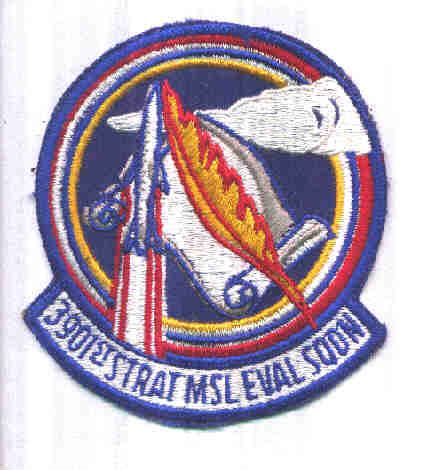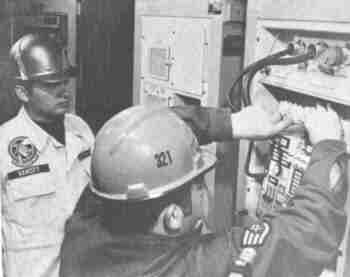Standardization, Evaluation, Inspection Operating, maintaining and securing nuclear weapons requires a lot of special attention, something those who got us started in this enterprise realized early. The early leadership, starting with General Curtis LeMay at the top, realized the need for special rules, error-free accounting, detailed checklists to accomplish tasks and other controls on those involved with our deterrent weapons. The two man/two person concept was a prime example - any task involving a nuclear weapon must be accomplished by two qualified and knowledgeable individuals who are always aware of what the other is doing. Training never stopped, and aggressive standardization, evaluation and inspection programs ensured that people knew the rules and complied with them. The system has worked for over 60 years, and continues to ensure the safety and security of our nuclear forces. General Curtis LeMay’s Thoughts on Standardization, Directives and Inspections Some called him the Father of Strategic Air Command (SAC), although he was not the first commander, but the second, replacing General George Kenney in the fall of 1948. As he said in his biography, “they hauled me out of Europe by my ears.” He took over SAC when the Air Force “had gone to utter hell.” He said, “I should go on record and say this flatly: we didn’t have one crew, not one crew in the entire command who could do a professional job.” He commanded SAC for nine years, right up to the early years of the activation of the new Intercontinental Ballistic Missile force. When he moved to his new job as Vice Chief of Staff of the Air Force, he left what was without a doubt the most professional, most effective command in the Air Force. General LeMay insisted on standardized, rigid procedures for every task. As he put it in his biography, Mission with LeMay, “We lined up every chore in the Command, and found people who know how that chore should be run. O. K., get down to business and write a manual. I want a manual for every soul who has a job to do.” General LeMay also had some words about perfection, “We made every man concentrate on being as nearly perfect as possible, in his own specific enterprise. Hell, we made every man concentrate on being perfect.” General LeMay also had some very good words about getting things done – he said, “First off, assemble the team: you don’t do everything alone. Our business was too complex for that, right from the start…My notion has been that you explain why, and then you don’t need to give any order at all. All you have to do is get your big feet out of the way, and things will really happen. Forever, I took the same course. Get the team together, There’s the goal, people. Go ahead.” General LeMay’s philosophy on inspectors and assistance was new to many. Again, from Mission with LeMay, “My philosophy is: the inspector is down there to help the commander make a better outfit. With the experience that he possesses, he should be able to help the commander. Therefore, the inspector should make his first report to the commander or the inspected unit; and make the second report to his own boss. The commander should be begging for the inspectors’ assistance, instead of shivering in alarm long before they have stepped over the horizon. We had to dress things up with a different name. I said, I’ll form an Assistance Team that won’t be in the AIG (Air Inspector General) shop at all. Actually, it was just another inspector, but run as I thought an inspection should be run. Here-in was the variation: the Assistance Team went down there and stayed with the outfit awhile, to help them fix the things which were wrong."”
Standardization, Evaluation, Inspection and Missileers When the Intercontinental Ballistic Missile (ICBM) became part of the Strategic Air Command (SAC) arsenal beginning in the late 1950s and into the early 1960s, General LeMay’s philosophy on standardization was in full swing. The practices he had put in place as the first Commander in Chief, SAC, were in full force in the full force in the bomb wings in the command. There were checklists, manuals or directives for every task, inspections and evaluations at many levels and careful attention to detail in everything that SAC did. This attitude carried over into the new missile units. In the early days there were only two ICBM wings, with most of the units being free standing units assigned to a host bomb wing. The missile squadrons were organized almost like a wing, with both operations and maintenance functions, depending on the host wing for support functions. Almost all the manning came from the SAC bomber force, which was being reduced at about the same time as the ICBM was introduced. There were some Missileers from the earlier systems like Matdor, Mace and Snark, and a few officers and enlisted members who came from other commands, but the vast majority had bomber experience. The units had standardization and evaluation programs in operations and quality control and inspection programs in maintenance, and SAC developed a command level program similar to that in the aircraft business. In addition to the SAC Inspector General teams, two specialized units ensured standardized performance in bomber operations and maintenance. The Combat Evaluations Group (CEVG) was made up of handpicked crew members and the unit visited each wing at least once per year, evaluations crew member performance as they flew missions. The Maintenance Standardization Evaluation Team (MSET) was made up of aircraft maintenance enlisted members from all the various specialties, who spent several days at each wing each year checking the performance of the wing’s maintainers. In 1961, SAC activated the 3901st Strategic Missile Evaluation Squadron (SMES), headquartered at Vandenberg AFB, California. The 3901st SMES visited each squadron or wing once or twice a year and squadron members evaluated operators, maintainers, missile civil engineers, reentry systems maintainers and missile communications technicians. By the late 1970s, the ICBM force had matured enough to have senior leaders who had grown up in the business, and they began to move into the important leadership positions. There was still a lot of bomber influence, since many of the pilots and navigators who had become Missileers in the Atlas and Titan I days, and even the early Minuteman days, had returned to the cockpit due to the war in Viet Nam, with most not returning to missile staff positions. The early standardization, inspection and evaluation philosophies stayed in through the SAC era, and carried into the brief period Air Command combat Command controlled ICBMS. When the ICBM force moved to Air Force Space Command, changes were made to some programs, and that continued in the Air Force Global strike Command era. Interestingly, after AFGSC was formed, one of the initiatives was called the Force Improvement Program, which brought some of the bomber programs to the missile wings – history repeated itself. .
|
|



